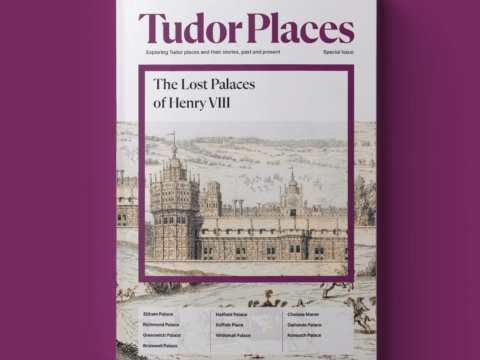Anne of Cleves: Life Story
Chapter 2 : Negotiations
In the early 1530s, a marriage had been mooted between Henry’s elder daughter, Mary, and Anne’s brother, Wilhelm. The Cleves sisters had also been touted as possible spouses for Henry in the immediate aftermath of Jane’s death, but nothing had come of the matter. At that time, Henry’s ambassador noted that ‘there [was] no great praise of either [Anne’s] personage or her beauty'. Despite this discouraging view, in 1538, the idea of an alliance was resurrected, with the suggestion of a double marriage between Henry and Anne, and Mary and Wilhelm. Still nothing came of it: it was not until early 1539 that a match between the English king and Anne became a policy pursued by both sides. Anne’s father had recently died, so her brother was now duke and responsible for her marriage, although Duchess Maria, as the actual inheritor of Jülich-Berg, had a good deal of influence over her son.
Henry sent an embassy to Cleves, to find out more about Anne and Amelia, and talk terms. Christopher Mont, one of the ambassadors, either genuinely impressed with Anne, or under strict instructions from Cromwell to promote the match, reported on 18th March 1539, that Anne exceeded her sister, Sibylle, Duchess of Saxony, ‘as the golden sun excelleth the silver moon.’ He added that her honest and modesty ‘appear.. plainly in the gravity of her face.’ Mont, originally from Koblenz, was a reformer, much influenced by Philip Melancthon, and would naturally have inclined towards promoting the alliance.
Mont’s description was pleasing enough for Henry to dispatch his court painter, Hans Holbein, to Cleves with instructions to make likenesses of both sisters, for the king to choose. He executed his commission quickly, but efficiently. Dr Wotton, another of Henry’s envoys, praised Holbein’s work as being very lifelike. Henry reviewed the paintings and declared himself content to continue negotiations for the elder sister. One of the topics on which the English delegation had to obtain information, was the status of Anne’s betrothal to Francis of Lorraine. They were assured that the matter had lapsed, and that Anne was free to marry.
Final details were confirmed in a marriage treaty, signed on 4th October. Henry was very reasonable in the matter of the dowry – although Anne’s brother was later known as ‘Wilhelm the Rich’, the financial resources of Cleves were of less interest to Henry than its ability to be a thorn in the emperor’s side.
All that was left was to arrange for Anne’s journey to her new home. The original plan for her to sail directly from the Guelders coastline, now controlled by Wilhelm, was not supported by her family. They were concerned about the dangers of such a long voyage, not just the risk of encountering storms, but what it might do to her delicate complexion. It was agreed that she should journey overland to Calais. England and the Empire were not officially at war, so a safe-conduct was requested for her to travel through the Low Countries, where Mary, dowager-queen of Hungary, the emperor’s sister, was regent. This was granted in early November, and Anne, accompanied by some fifteen ladies-in-waiting, set out from Düsseldorf, stopping en route at Cleves, and then travelling on to Antwerp.
There was a significant English population in Antwerp, an important centre for the cloth trade and fifty English merchants, dressed in velvet coats and sporting gold chains, turned out to greet their new queen. She was greeted with similar display at Gravelines, with the addition of a gun-salute. Departing Gravelines, she entered the English territory of the Calais Pale.
For the English court, Henry’s decision to marry a foreign noble woman, rather than one of his subjects, and build international alliances, was a return to matrimonial normality. It was nearly forty years since the arrival of Katharine of Aragon from Spain, but the tradition of a foreign queen, who was above faction was strong – the only downside, from the point-of-view of religious traditionalists at Henry’s court, was Anne’s representation of an alliance with German reformers, rather than imperialist Catholics.
Nobles with unmarried daughters or sisters were soon vying for places in the retinue being formed for the queen. For over two years, since the death of Jane Seymour, there had been little socialising at court – the king’s eldest daughter was unmarried, so could not preside, and Henry’s only remaining sister was in Scotland. A queen meant a return to the pleasures of a mixed court, so when she arrived in Calais, the gentlemen sent to meet her were agog to see their new mistress.
Among those who greeted Anne at Calais were the brothers of the late Queen Jane, Edward Seymour, Earl of Hertford and Sir Thomas Seymour. There was also Thomas Cromwell’s son, Gregory, married to Queen Jane’s sister, Elizabeth. The king’s lieutenant in Calais was his half-uncle, Arthur, Viscount Lisle. Lady Lisle, whose daughter, Anne Basset, had served Jane, and had been given a place in the household, wrote to her daughter that the new queen was gracious, willing to be pleased by everything done for her, and likely to be an easy mistress.
Anne of Cleves
Family Tree
